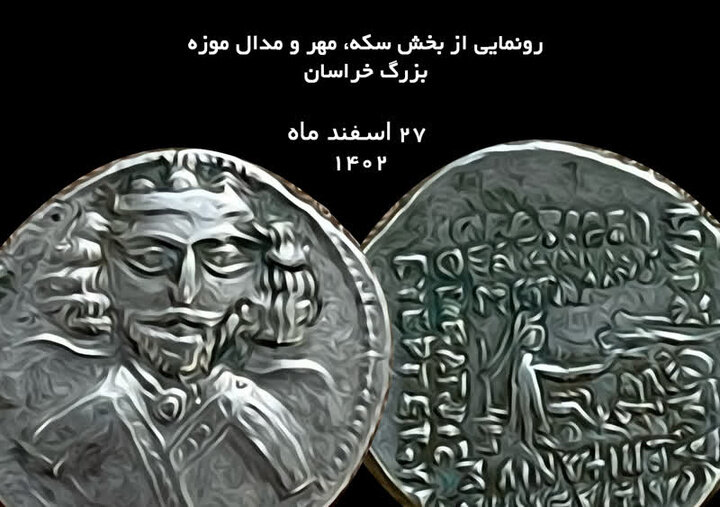Khorasan’s Great Museum to showcase treasured ancient coins

TEHRAN – A captivating historical coin exhibition is planned to open doors at the prestigious Great Museum of Khorasan in the course of the upcoming Persian New Year’s holidays, Nowruz.
In a recent announcement, Khorasan Razavi’s cultural heritage deputy chief shared insights into the remarkable showcase, highlighting the exquisite nature of these coins crafted from gold, silver, and copper, with origins tracing back an impressive 2,200 years.
Mentioning Nowruz as a great opportunity to visit the exhibition, Ehsan Zohrevandi pointed to the rarity and value of these hundreds of coins on display.
The official also outlined that the collection encompasses a diverse array of historical periods, including the Macedonian, Parthian, Sassanian, Rashidun Caliphate, Umayyad, Abbasid, Fatimid Egypt, Samanid, Ghaznavid, Albooyeh, Ayyubid, Khwarazmian, Seljuk, Ilkhanid, Timurid, Gorkani of India, Qara Qoyunlu, Ottoman, Safavid, Afsharid, Qajar, and Pahlavi eras.
According to the official, as the exhibition unfolds every day starting from March,17, prospective visitors have the opportunity to immerse themselves in this fascinating journey through time.
Operating hours are from 9 am to 8 pm, inviting enthusiasts to explore the historical richness at the Great Museum of Khorasan, nestled within the scenic Koohsangi Garden in Mashhad.
In about 220 CE, the Sasanian dynasty of Iran introduced the concept of thin flan coins, issues that were struck in relief on both sides. In order not to produce intolerable stresses in the dies, since the thinner the material the more force necessary to make it flow into the recesses of the die’s design, the depth of relief on such coins was of necessity much shallower than with earlier currency. Such techniques spread by way of Byzantium to northern Europe, where the emperor Charlemagne struck thin flan deniers (small silver coins), or pennies, which became characteristic of both his own and neighboring kingdoms.
The Muslim conquest of Persia, also known as the Arab conquest of Iran, led to the fall of the Sasanian Empire of Iran (Persia) in ca. 651 and the eventual decline of the Zoroastrian religion. The rise of Muslims coincided with an unprecedented political, social, economic, and military weakness in Persia. The conquering Muslims at first mimicked the coinage of their predecessors. In the western provinces, they issued gold and copper pieces imitated from contemporary Byzantine coins, modifying the cross on the reverse of the latter somewhat to suit Muslim sensibilities. In the eastern provinces, the Arab governors issued silver dirhams that were copies of late Sasanian coins (mostly of those of Khosrow II; with the addition of short Arabic inscriptions on the margin and often the name of the Arab governor in Pahlavi; even the crude representation of the fire altar was retained.
Leave a Comment